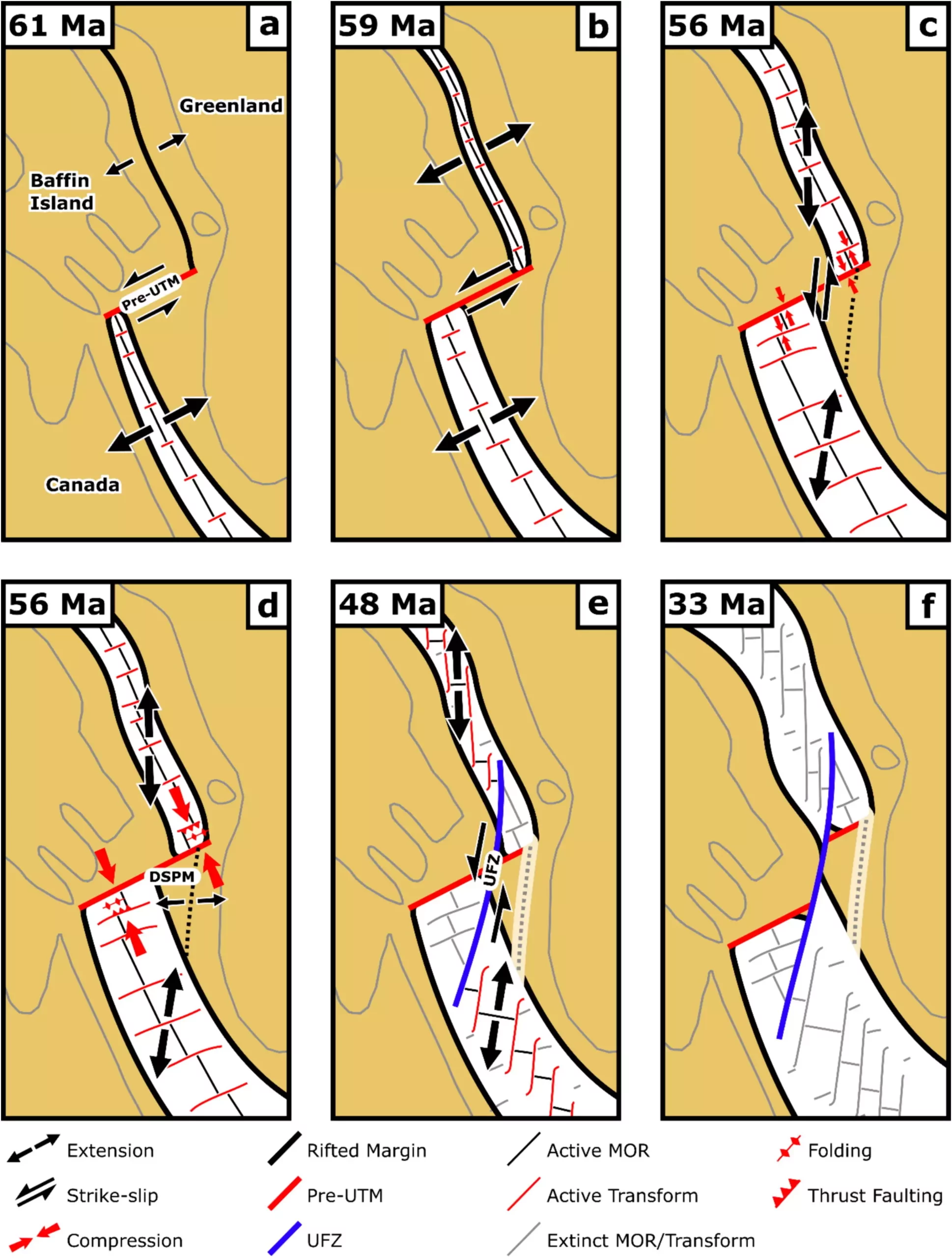Plate tectonics play a vital role in shaping the Earth’s continental configurations. The movement of the lithosphere, which consists of the oceanic and continental crusts and upper mantle, is driven by convection processes in the asthenospheric mantle. This movement leads to various geological phenomena such as earthquakes, volcanic eruptions, and mountain formations, particularly at the boundaries of tectonic plates.
One of the intriguing plate boundaries is located between Canada and Greenland, giving rise to the Davis Strait seaway. This seaway connects two ocean basins, the Labrador Sea, and Baffin Bay. The tectonic evolution of the Davis Strait dates back to approximately 33-61 million years ago during the Paleogene period. One remarkable feature that emerged during this time is a thicker fragment of continental crust in the ocean, measuring between 19-24 kilometers. This anomaly is now known as the Davis Strait proto-microcontinent, an incompletely rifted and submerged landmass offshore of west Greenland.
Recent research published in Gondwana Research sheds light on the mechanism behind the formation of the Davis Strait proto-microcontinent. The study conducted by Luke Longley, Dr. Jordan Phethean, and Dr. Christian Schiffer focuses on the plate tectonic movements spanning approximately 30 million years that led to the creation of this microcontinent. The researchers define proto-microcontinents as regions of thick continental lithosphere isolated from major continents by zones of thinner continental lithosphere.
Dr. Phethean emphasizes the significance of studying past microcontinent formations and their relevance to current geological processes. The distinct changes in plate motion observed in the Labrador Sea and Baffin Bay make this region an ideal natural laboratory for investigating microcontinent formation. Understanding the mechanisms behind microcontinent formation is crucial for predicting future evolutionary trends in geological processes.
To delve deeper into the formation of the Davis Strait proto-microcontinent, the research team utilized maps derived from gravity and seismic reflection data. These maps helped identify the orientation and age of faults related to rifting, the mid-ocean ridge where Greenland separated from the North American plate, and the associated transform faults where tectonic plates slide past each other. The initiation of rifting between Canada and Greenland around 118 million years ago marked the beginning of the process, with seafloor spreading commencing in the Labrador Sea and Baffin Bay at approximately 61 million years ago.
The period between 49-58 million years ago played a crucial role in the formation of the Davis Strait proto-microcontinent. This period witnessed a shift in the orientation of seafloor spreading between Canada and Greenland, leading to the rift formation of the microcontinent. By around 33 million years ago, ocean spreading ceased as Greenland collided with Ellesmere Island, resulting in Greenland joining the North American plate. The identification of the Davis Strait proto-microcontinent was based on crustal thickness analysis, where the microcontinent displayed a characteristic range of 19-24 kilometers of thinned continental crust.
The research conducted on the Davis Strait proto-microcontinent has broader implications for understanding the formation of other microcontinents globally. By studying the calving processes of microcontinents from continental crust, scientists can gain insights into similar phenomena occurring in regions like the Jan Mayen microcontinent northeast of Iceland, East Tasman Rise southeast of Tasmania, and the Gulden Draak Knoll offshore western Australia. The findings from this study contribute to the ongoing exploration of plate tectonics and the dynamic geological processes shaping Earth’s surface.


Leave a Reply